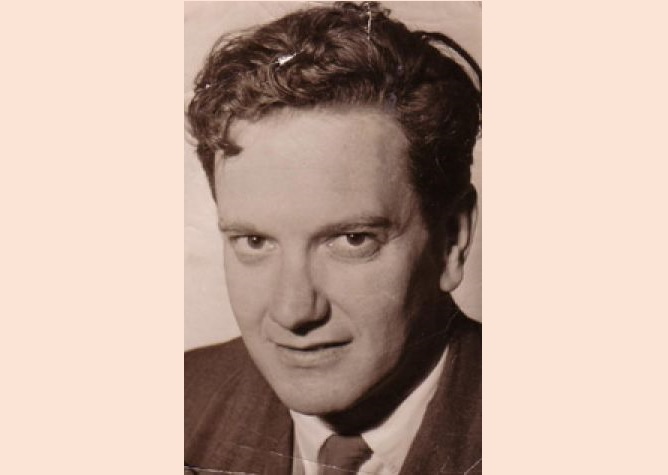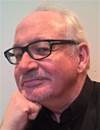Preamble
The Australian Computer Society was formed 50 years ago, when the various state computer societies joined forces.
To mark the occasion, the ACS has initiated a heritage project to honour the many individuals who have contributed to the growth of the ICT profession in Australia.
At the heart of the project is a history of computing in Australia. It is not just a history of the ACS, but the history of a profession.
Australia has the longest computing history of any country, excepting the US and the UK, and CSIRAC in the Museum of Victoria is the oldest computer still in existence.
Previously published:
Chapter 1 -The start of Australia’s computing history
Chapter 2: The first Australian Computer Conference
Chapter 3: Harry Messel and the birth of SILLIAC
Chapter 4: John Bennett
The choice of John Bennett to manage SILLIAC was an inspired one -- he was to have a significant effect on the development of the Australian computer industry.
John Makepeace Bennett was born in the southern Queensland town of Warwick on 31 July 1921. He was educated at the University of Queensland, where he studied civil engineering. He later said, perhaps only half in jest, that the main reason he decided upon civil engineering was that his older brother Ron had done that course, and he could use all his lecture notes.
He joined the Royal Australian Air Force in 1942, working in a radar unit in the Wessel Islands off Arnhem Land, where he began his long interest in Aboriginal culture. After the war he returned to the University of Queensland as part of the Commonwealth Reconstruction Training Scheme, a program to provide further education to returned servicemen.
He studied mathematics and electrical and mechanical engineering, which included a work experience stint at the Electrotechnology Division of the Council for Scientific and Industrial Research, which was to become CSIRO. There he met Trevor Pearcey, who was to design and build the Mark 1 computer, later called CSIRAC, which was the first computer in Australia and only the third in the world.
In the beginning
Bennett’s interest in computing was aroused in 1947 when he was forced to carry out a large number of repetitive calculations for Brisbane’s post-war electricity network. He heard about the work on automatic computing being conducted in the UK, and applied to join the National Physical Laboratory, which was developing the ACE (Automatic Computing Engine) in London.
He was accepted, but through good luck his application was passed through to Douglas Hartree, Chairman of Cambridge University’s Mathematical Laboratory. When he arrived in England in late 1947 he became the first research student assigned to the Laboratory’s head, Maurice Wilkes.
That led to him becoming a member of the team developing the EDSAC (Electronic delay Storage Automatic Calculator) computer. John Bennett played a major role in the development of this seminal machine, which was the most advanced computer in the world at that time and the first stored program computer in regular operational use.
Bennett programmed the world’s first ever structural engineering calculations on EDSAC, using the work as part of his work on his PhD, awarded by Cambridge University in 1952. He stayed in England for nearly ten years, from his mid-20s to mid-30s. He held senior design positions with Ferranti, which built the world’s first commercially available computer, designing the instruction set for the Ferranti Mark 1.
In November 1955 he was approached by Harry Messel to return to Australia to take up position of Numerical Analyst in the Department of Physics, a job newly created for the person who would be in charge of the university’s new SILLIAC computer. He saw the opportunity and gave up the offer of a high paying job with IBM in England, returning to Australia in February 1956.
The first supercomputer
SILLIAC was one of the most advanced computers in the world, and much more powerful than Pearcey’s CSIR Mark 1. It was a parallel machine, meaning it could do many calculations simultaneously, greatly increasing its computational speed.
It was one of the first computers to be dubbed a ‘supercomputer’. It was comparatively compact – 3 metres wide, 2.5 metres high, and just .6 metres deep. It had 2,768 vacuum tubes (expanded to 2,911 after a 1958 upgrade). Most of them were high quality 2C51 twin triodes, about the size of a large human thumb. They were much more reliable than the tubes used in ILLIAC, which gave SILLIAC a Mean Time Between Failures (MTBF) of 11 hours – extraordinary for its era. Modified versions of these valves are still in production today, mostly to provide the mellow sound of high end audio amplifiers.
The 2C51 vacuum tubes and its solid construction meant that SILLIAC developed a reputation as the most reliable computer in the world. It had a 1,024 word RAM (random access memory) provided by 40 Williams-Kilburn tubes, a type of cathode ray tube used as memory in many early computers. Each tube held one bit of each 40-bit word, which meant it had total memory capacity of 1,024 x 40 bits, or about 5 kilobytes in modern parlance. It used paper tape for input/output. There was no external storage until the addition in 1958 of four magnetic tape units. It took 20km of wiring to connect all the components to each other.
It was first switched on in March 1956 (the exact date is not recorded), a few weeks after Bennett had arrived from London. The first few months were devoted to testing its various components – it could do nothing useful until its memory was installed in May.
By June, Bennett had written a programming manual, which incorporated a lot of work that had been done at ILLIAC. He also found time to develop and deliver Australia’s first university course in computer programming, which ran over two evenings a week from June to August and attracted 50 students.
The short course John Bennett developed as SILLIAC was being tested developed into an entire syllabus in programming and computational theory. In 1961 he became Professor of Physics (Electronic Computing) at Sydney University. It was the first such position in Australia, with the title later changed to Professor of Computing Science.
First President of the ACS
In 1959 he became the first Chairman of the Australian Committee on Computation and Automatic Control, an organisation he founded to promote computing around Australia. In 1965 he was the first President of the NSW Computer Society. When the state computer societies joined to become the Australian Computer Society on 1 January 1966 he become the national organisation’s first President.
After his retirement from Sydney University in 1987 he remained an active member of the Australian and international IT community, serving on various boards of the ACS, IFIP (International Federation for Information Processing) and ICCC (International Conference on Computational Creativity). He regarded his greatest achievement as educating two generations of young Australian computer professionals.
John Bennett was a true pioneer of Australian computing. He was made an Officer of the Order of Australia (AO) in 1983, and was awarded the Centenary Medal in 2001 for services to Australian technology, and the Pearcey Medal in 2004. He died on Sydney’s Northern Beaches, aged 89, on 9 December 2010.
Veteran ICT journalist Graeme Philipson is researching and writing the Heritage Project book, which is due for release on the 50th anniversary of the formal incorporation of the ACS, on 3 October 2017.
The project also involves the creation of a ‘virtual museum’, cataloguing hardware and other artefacts, and collecting and curating documents on the history of the industry, including oral histories of as many people as possible.
Please get in touch with Graeme if you would like to contribute, at [email protected]










